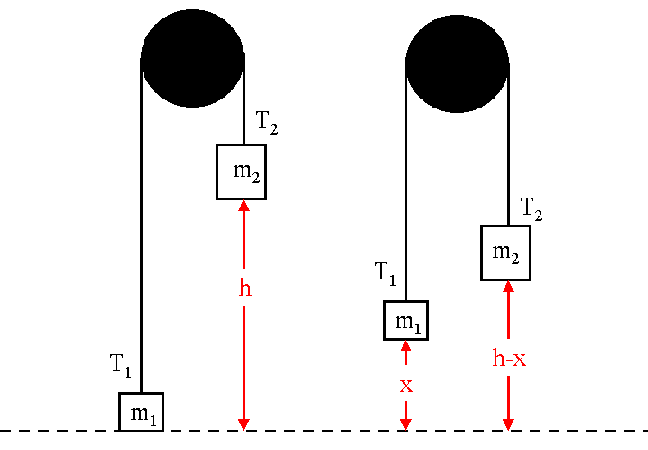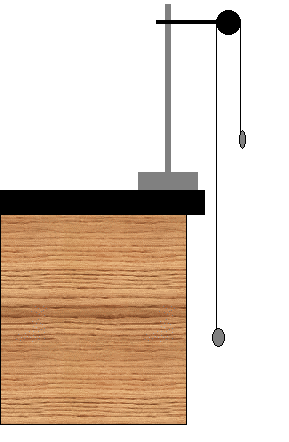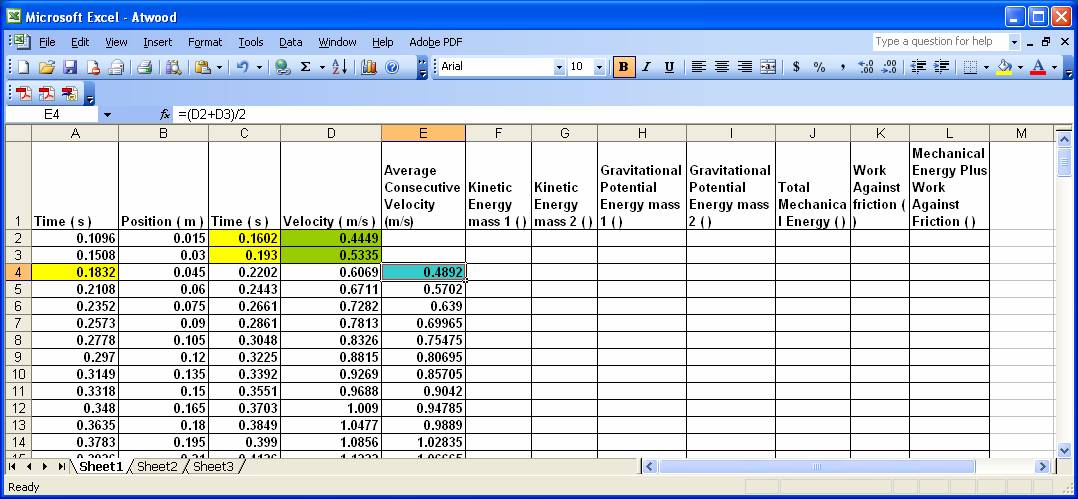

 PYL 105
PYL 105





 PYL 105
PYL 105




The figure below shows an Atwood's machine, two unequal masses (m1 and m2) connected by a string that passes over a pulley.

Consider the forces acting on each mass. Assume that the string is massless and does not stretch and that pulley is massless and frictionless. Derive an expression for the acceleration; it should have the form

Of course, this is an idealized calculation, and we cannot expect to find this acceleration experimentally. Let us keep the other approximations but drop the frictionless approximation, identifying friction as the cause of any deviation from the ideal acceleration given above. We can then relate the frictional force to the difference between the ideal and experimental accelerations. The ideal force leads to the ideal acceleration
Fideal = (m1+m2)aideal
Including the frictional force leads to the experimental acceleration
Fideal - Ffric = (m1 + m2) aexp
Solve these for Ffric.
We could also adopt an energy approach to this problem. One of the first steps in the energy approach is to determine the "system" for which we are calculating the energy. The "system" could be
Determining the system determines whether a force is identified as external or internal and in some cases whether we talk about work or potential energy. For the systems above
If we consider m1 and the earth as our system, then the tension is external to the system, and does work on m1. The work results in a change of energy, both kinetic and gravitational potential energy.
Returning to the frictionless approximation, find an equation relating the work done by T1 to the change in energy of the m1-earth system. Assume the mass starts from rest and is displaced a distance x from its initial position. Similarly find an equation relating the work done by T2 to the change in energy of the m2-earth system. (They must be included in your report.) Since the tensions are equal in magnitude and the displacements are likewise equal in magnitude, we could eliminate the work done by the tensions to find

This result is the energy of the m1-m2-earth system and ideally ΔE=0, that is, the energy of the m1-m2-earth system is conserved. That is, ideally the energy does not change from its initial value which can be taken to be
E0 = m2 g h
again assuming that the system starts from rest in the position shown on the left above.
Of course, friction must be brought into the energy approach as well. Just as friction accounted for the deviation from the ideal acceleration in the previous approach, it should also account for any changes in the energy in the latter approach. That is, the work associated with the frictional force (the work done against the frictional force) should equal the observed change in energy.
Measurements
| m1 | m2 | h |

| aideal ( ) |
aexp ( ) |
Ffric ( ) |

Calculate the average of two consecutive velocities. For example, you might enter a formula like
= (D2 + D3)/2
in cell E4. This will determine the velocities at roughly the times for which we have position data.(In the formulas above m2 was the heavier mass and started at the higher position.) The corresponding Excel formula could be placed in columns F,G,H and I as shown above.
Wfric = Ffric x
Calculate the work done against friction (in column K).
